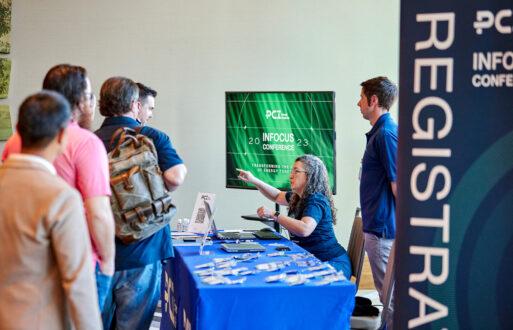We all know that computing and software technology help maximize business efficiency. They facilitate faster processing of data and easier retrieval of information.
Automating workflows and processes gives companies a competitive edge in a number of ways, one of which is being able to re-purpose staff to save time and narrow their focus on the highest value-added activities.
A well-crafted, all-encompassing computing and software technology roadmap will provide a strategy for your organization not just to avoid extinction but to increase productivity and revenue. Incorporating a single source strategy for many business-critical functions is likely to be the lowest cost, highest ROI option that will drive the greatest number of efficiencies.
Examining the benefits of single-sourcing is the primary thrust of this article.
The Cowboys vs. The Cartel
Late in 2014, OPEC declared a price war against U.S. shale oil drillers by inundating the market with crude. The strategy was time-tested, simple, and effective: flood the market and bankrupt your rival. Everyone involved thought that OPEC would win out in this latest dust-up, just as they always had.
Until they didn’t.
Many U.S. wildcatters folded or were absorbed by larger producers, with survivors forced to leverage technology to do more with less. In relatively short order, advances in hydraulic fracturing and horizontal drilling increased output by a third, while rig counts began to drop precipitously (around 70% by mid-2016).

Lesson learned?
When faced with extinction, leveraging technology to drive down costs, as well as boost efficiency and output, is one of the best retaliatory strategies to ensure not just survival but effective competitive re-positioning and future success.
But remember, only the strongest (and smartest) survive.
Parallels to Today
The basic utility model of a natural monopoly has been around for a century, though it will change radically in the coming years. How that change will look is not fully known, but it will be affected by budgetary pressures that will inevitably keep mounting, so executives will need to do more with less, just like the Cowboys.
During the past decade, many public utilities achieved significant operational and overall efficiency gains, many of which were impacted in different ways by advancements in tech. These include:
- Improved customer satisfaction;
- Rate stability;
- Greater overall efficiency – with fewer people and smaller budgets;
- Some workforce reductions reached 25% (measurably based on the increase in baby boomer retirements).
A comprehensive energy market software solution will be the next route to even greater efficiency gains.
Throughout the new decade, utilities and energy market participants will be actively reviewing the current technology landscape, now characterized as a bit of a “Hodge-Podge” that encompasses many vendors woven in with in-house tech solutions. Companies will examine costs and benefits and, for many reasons, gravitate toward – and ultimately favor – suppliers that can serve as a single-source solution.
Approaches & Considerations
Beware the Hodge-Podge
The mosaic approach of external and internal solutions results in several adverse consequences:
- Issue troubleshooting and resolution times increase.
- IT staff are diverted from addressing more important tasks.
- End-user frustration is typically greater.
- Maintaining many custom user interfaces consumes time and money.
- Business users need training on many systems.
- Post-analysis, a foundational component of increasingly important pattern recognition and machine learning, is made more difficult.
Pros of the Strategic Partnership
Traditionally, relationships have been more transactional and geared toward getting the most in exchange for the least. Costs drive the transactional relationship, which can degrade all too quickly after the customer buys. Kind of like buying a car.

Tech vendor/client partnerships…
Evolving energy markets will force major changes in the relationships between software suppliers and their customers.
Strategic partnerships represent a more evolved way of thinking about success and longevity in business. They exist in natural opposition to many of the terms surrounding transactional relationships and involve honest, mutual concern among partners for shared success. Oftentimes, strategic partnerships produce extraordinary results and allow your enterprise to:
- Focus on its core business;
- Leverage natural competitive advantages;
- Better forecast and fix costs in multiple areas.
The migration away from transactional vendor-client relationships and toward strategic partnerships has already picked up steam. In the energy industry, the pace and frequency of these connections will intensify as organizations can strategically connect with technology partners that offer a single solution model.
Stay in Your Lane
Successful executives own the common yet critical emotionally intelligent trait of understanding their strengths and weaknesses. The best execs focus their own time in ways that leverage their strengths. In areas of recognized weakness, they surround themselves with people who have compensating skill sets.
They also apply the same self-awareness to the enterprise at large and therefore utilize the same humility and wisdom to not stray into expensive investments in areas of non-expertise.
For example, it makes sense to be aware of emerging technologies like Blockchain. But why would you devote your budget to building your own platform? The glittering promises of technology sometimes offer the temptation to “go it alone.” Oftentimes in business, that mindset has proven to be a big mistake.
Energy market participants are assessing their technology strategy and options to determine their best course of action. The same examination is taking place regarding strategic technology partnerships.
Choose Wisely
Here are a few questions to ask when attempting to identify the right fit with any potential strategic partner:
- Risk
- Will they be in business for the next decade-plus?
- Are they likely to be an acquisition candidate?
- Experience
- What is their depth and breadth of industry experience?
- Is their experience highly relevant and applicable to my firm, my market(s), and my users?

Choose wisely…
Does your strategic partner match the values and ideals central to your organization?
- Culture /Mindset
- Do they place a high value on client engagement and satisfaction?
- Will they act as an extension of my internal staff?
- Value / ROI – Where can my firm and my potential partner deliver mutual value and success?
- Stability/ Sustainability – Can the partnership executive teams effectively resolve any adversity?
The New World of ETRM
The era of “Cadillac” ETRM systems costing millions of dollars will continue to shrink over the next decade. For example, an ETRM tool that cost $5 million five years ago now goes for about $1.5 million. Think, if you bought a Smart TV five years ago, you paid a lot more for it then compared to today. “Deflation” in the jargon of central bankers gets associated with technology disruption, and the moniker can easily be applied to expensive ETRM systems.
Here’s why the downward pressure on ETRM licensing fees will continue:
- Physical bilateral trading continues to dissipate. Note:
- Stakeholders in the Pacific Northwest continue their march toward an organized market.
- The Southeast remains the final holdout to the organized market paradigm.
- The move toward regional markets, or Joint Dispatch Agreements, is a ship that has left port.
- Reduced bilateral trading and fuel volumes change the requirements for ETRM.
- Separate systems of record for bilateral trades and RTO/ISO transactions are no longer needed.
- Today, many trading/settlement activities are commoditized and automated.
- Energy companies require more staff analytical capability.
- Automating common tasks liberates employees to focus on the highest value-added work.
- Fewer transactions change the value prop and away from expensive ETRM systems and their more robust risk calculation capabilities.
- A single-source energy solution provides risk intelligence in less time. The premium paid for this capability will change.
- Budget constraints will not favor maintaining expensive systems.
- Utilities have more ETRM options today. It used to be that companies were stuck onboarding ETRMs developed from either financial or unregulated trading, which inherently required more sophisticated risk capabilities, which also came with a bigger system price tag.
Disruptive Change & the Advent of “Smart” ETRM
Change and the energy industry go hand-in-hand. This is truer today than ever, as evidenced by the growth and penetration of renewables, Demand Resources, and energy storage. Community Choice Aggregation (CCA) agreements, along with federal and local regulations, are also expanding.
Industry dynamism alone is a key reason to actively consider single-sourcing solutions offered by a strategic partner that actively helps your enterprise meet business challenges and offloads the significant investment of people, time, and money necessary to develop, maintain, and upgrade mission-critical software systems.
Increasingly, market players will focus their technology expertise on supporting data science; an activity made easier when not having IT experts building and monitoring systems to support the front, mid, and back office.
PCI is the premier, one-stop provider of essential software solutions for energy supply, trading, and marketing organizations. The PCI Platform includes numerous solutions for optimizing:
- Portfolio operations and performance
- Bid-to-bill workflows and automation
- Asset operations and outage management
- Business intelligence and reporting
PCI’s “Smart” ETRM” seamlessly integrates into our larger platform to streamline and automate end-to-end workflows for operating in North American power and gas markets. It offers multi-commodity ETRM with optimization, energy accounting, asset operations (and more) in the same system with numerous advantages:
- Real-time data availability across desks
- Power/Fuel harmonization
- Cloud-based delivery for optimized UX and IT support
Like those “cowboys” facing the OPEC cartel, utilities will adapt and survive if their business models change. And the single-source solution via strategic partnership will make survival easier.







